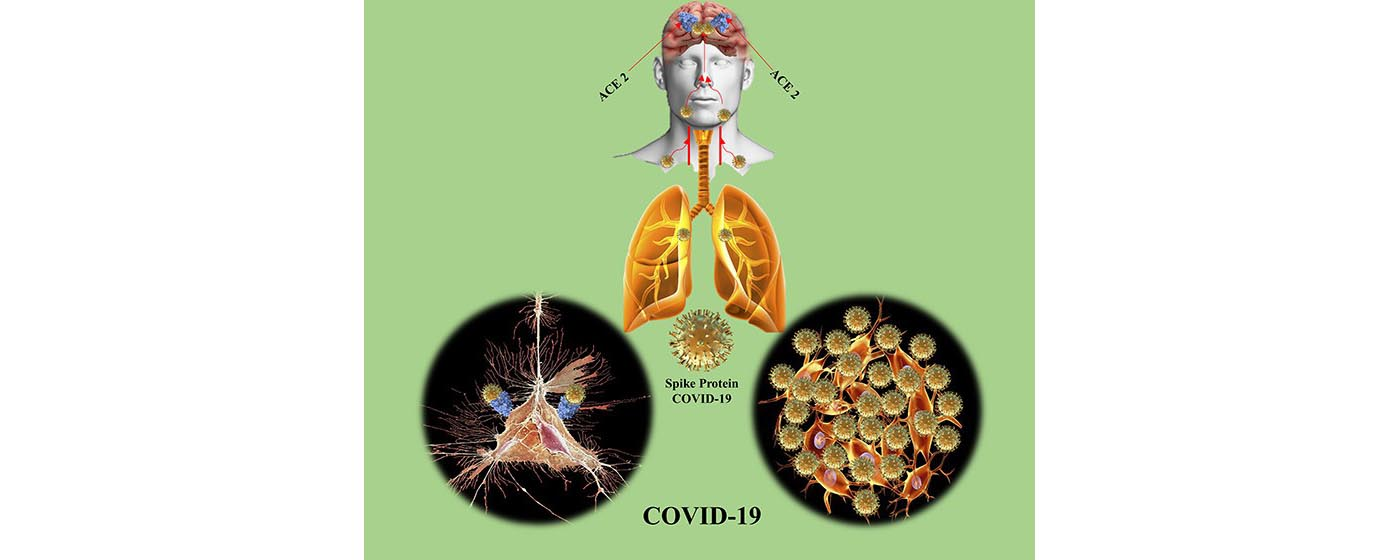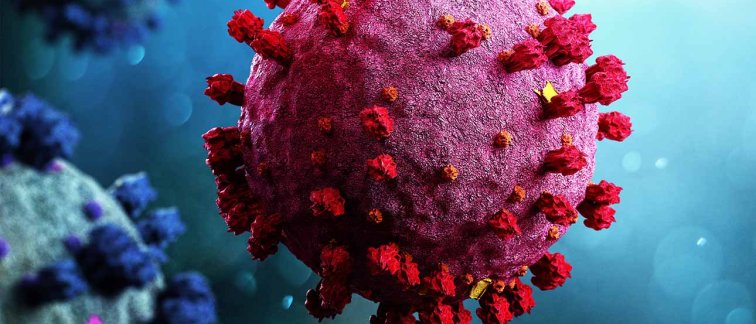The first line of reasoning comes from Li et al (2020) J. Med. Virol. ‘Patients with COVID-19 have respiratory distress, and sometimes cannot breathe spontaneously. In addition, they may show neurologic signs, such as headache, nausea, and vomiting. Increasing evidence shows that coronaviruses are not always confined to the respiratory tract but may also invade the central nervous system inducing neurological diseases.’
Indeed SARS-CoV-1, the most closely related human coronavirus, has been reported in the brains from both patients and experimental animals, where the brainstem was heavily infected, and there is speculation that coronaviruses may spread via a synapse connected route to the medullary cardiorespiratory center from the mechanoreceptors and chemoreceptors in the lung and lower respiratory airways.

A second line of arguments underscoring the neuro-invasion hypothesis comes from a study by Baig et al. (2020) ACS Chem Neurosci. ‘In the short time following the outbreak, it has been shown that - similar to SARS-CoV-1 - the SARS-CoV-2 virus exploits the angiotensin converting enzyme 2 (ACE2) receptor to gain entry inside the cells. This finding raised the curiosity of investigating the expression of ACE2 in neurological tissue and determine the possible contribution of neurological tissue damage to the morbidity and mortality caused by SARS-CoV-2.’ They present a line-up of data ranging from the genome of the SARS-CoV-2 virus, the tissue distribution of ACE2 in the human brain tissues and a proposed cascade of how the ACE2 receptors in the brain are exploited by the SARS-CoV-2 virus to gain entry inside the host cells in the brain.
‘Once within the milieu of the neuronal tissues, the interaction SARS-CoV-2 with ACE2 receptors expressed in neurons can initiate a cycle of viral budding accompanied by neuronal damage without substantial inflammation, as has been seen with cases of SARS-CoV-1 in the past.’
The neurological damage resulting from the potential invasion of SARS-CoV-2 into the CNS is likely to be partially responsible for the acute respiratory failure of patients with COVID 19 coming into the Intensive Care Unit (ICU) with severe symptoms.
References:
For more general background on coronaviruses and the brain, see: Neuroinvasive and Neurotropic Human Respiratory Coronaviruses: Potential Neurovirulent Agents in Humans

